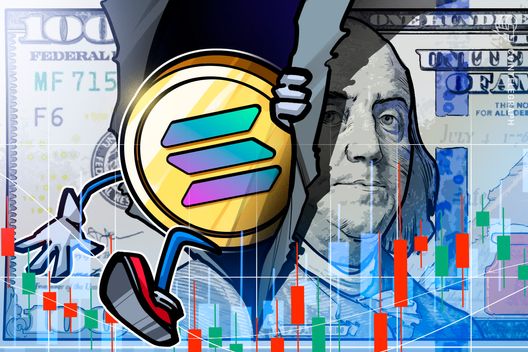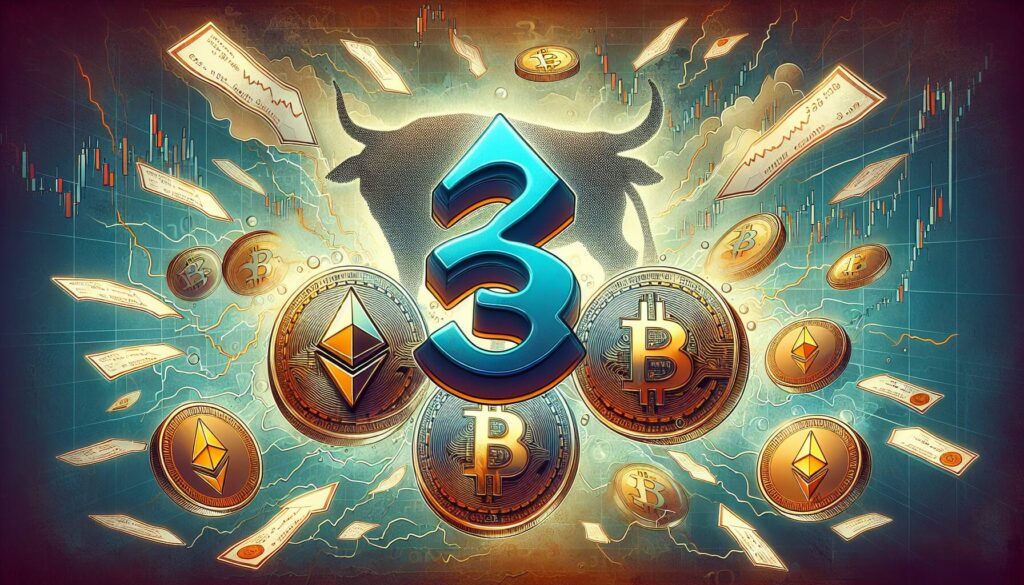The cryptocurrency landscape is buzzing with speculation about a potential alt season, a phase where alternative cryptocurrencies, or altcoins, could start to outperform Bitcoin (BTC). This anticipation comes on the heels of President Donald Trump’s recent comments about “tariff dividends,” which could see U.S. citizens receiving rebates of up to $2,000. In an interview, Trump indicated that the revenue from tariffs, projected to top one trillion dollars annually, might be utilized to alleviate federal debt while also directly benefiting American households.
“They’re just starting to kick in,” Trump stated, emphasizing the potential economic impact of his tariff revenue plans.
The prospect of these rebate checks, combined with expected cuts in Federal Reserve interest rates, may encourage financial risk-taking among consumers who find themselves with a little extra cash. This could notably influence investments in altcoins, which have been trailing behind their bigger counterparts this year. Data shows that the CoinDesk 20 Index of major cryptocurrencies surged by 48% in 2025, vastly outpacing the CoinDesk 80 Index of smaller tokens.
A 2023 research paper by Marco Di Maggio from Harvard highlights how stimulus payments, previously issued during economic downturns, tend to increase cryptocurrency investments as households experience less financial strain. Historical parallels are drawn to the surge in altcoin trading from 2020-21, a period marked by government-issued stimulus checks during the pandemic, which prompted a rush into the crypto market.
“In 2020, crypto’s institutional rails were barely in place… Retail-led rallies fueled by stimulus checks allowed rapid cascades from majors to altcoins,” explained Jasper De Maere, an OTC desk strategist.
However, the current market environment is quite different. Interest rates now exceed 4%, a significant shift from the zero rates seen in 2020. This elevated rate structure may limit indiscriminate rallies, making any forthcoming alt season more selective and grounded in genuine utility instead of speculative fervor. The total cryptocurrency market cap’s substantial growth also plays a role, requiring more precise analysis to discern promising projects from mere hype.

The Potential Impact of Alt Season and Tariff Dividends
Key points related to the upcoming alt season and the proposed tariff dividends from President Trump:
- Alt Season Potential: A phase where altcoins may outperform Bitcoin, suggesting a shift in investment focus.
- Tariff Dividends: Trump considers distributing up to $2,000 to citizens from tariff revenues, which could induce riskier financial behaviors.
- Impact on Crypto Investments: Historical evidence shows that financial stimulus can lead to increased investment in cryptocurrencies, particularly altcoins.
- Financial Behavior Changes: Expected Federal Reserve interest-rate cuts and potential tariff rebates may reduce budget constraints, encouraging more financial risk-taking.
- Historical Precedent: Previous stimulus checks contributed to a significant surge in altcoin investments during 2020-21, illustrating the power of instant financial incentives.
- Market Conditions: The current elevated interest rates are limiting indiscriminate rallies in altcoins, making future movements more selective based on utility.
- Investment Analysis Importance: Investors will need to conduct rigorous analysis to differentiate between valuable altcoins and those lacking real-world utility as the market evolves.
Potential Altcoin Surge Amid Tariff Dividends: A New Era for Cryptocurrencies?
The anticipated alt season thrives on the backdrop of potential tariff dividends proposed by President Trump, stirring excitement among cryptocurrency enthusiasts. This phase, where alternative cryptocurrencies capture attention away from Bitcoin, presents distinct competitive advantages and challenges for both investors and market participants. A crucial element in this narrative is the expected influx of cash into the hands of American citizens—an enticing prospect for risk-seeking investors, particularly in altcoins, which have lagged in performance compared to the more established cryptocurrencies.
Potential Competitive Advantages: The promise of up to $2,000 in rebates could unleash significant capital across the crypto market. Historical trends indicate that similar fiscal measures during past economic stimuli led to a surge in altcoin investments, as seen in 2020-21. This anticipated financial windfall could encourage speculative behavior, fostering an environment ripe for altcoins to flourish as retail investors feel more comfortable investing in riskier assets amid easing budgetary constraints. Furthermore, the recent findings from Harvard’s Marco Di Maggio indicate a direct correlation between relaxed financial pressures and increased crypto investment, bolstering optimism for a possible altcoin renaissance.
Potential Disadvantages: Despite these optimistic projections, inherent risks remain. The current economic climate boasts elevated interest rates above 4%, in stark contrast to the zero-rate environment of 2020 that spurred indiscriminate risk-taking. It suggests that any forthcoming alt season might be more tempered and discerning. Additionally, the remarkably larger total crypto market cap could inhibit the kind of free-for-all rallies witnessed previously, making it crucial for investors to apply rigorous analysis to differentiate high-potential projects from those lacking substantive utility.
Beneficiaries and Challenges: This potential alt season could significantly benefit retail investors eager to harness new financial opportunities. Alternatively, it poses challenges for traditional investors who may be hesitant to shift their strategies amid heightened volatility and uncertainty. Moreover, market regulators might face increased pressure to provide clearer guidelines as retail trading surges, potentially complicating the landscape further. As investors prepare for this evolving environment, the focus will likely hone in on identifying altcoins with strong fundamentals rather than succumbing to speculative hype, a shift that could reshape the future of cryptocurrency investing.

















